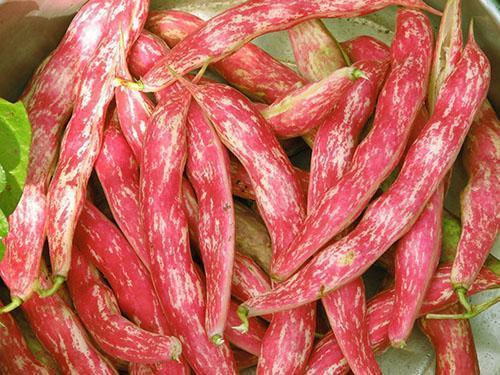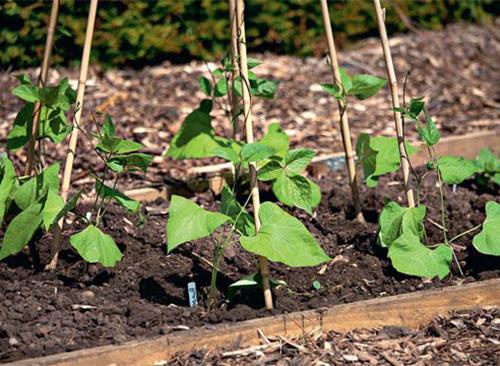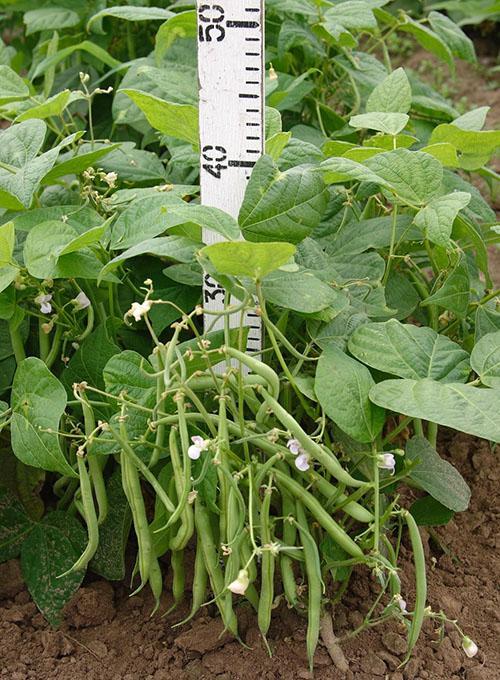Learning to grow and care for asparagus beans
 Legumes, starting with beans, peas, soybeans, ending with peanuts, have long established themselves as a rich source of fiber, easily digestible proteins, complex carbohydrates. They bring great benefits to the body: they enrich it with acids, vitamins and microelements, protect against infections, and increase resistance to diseases. In such a large family, a plant stands out that combines the maximum number of useful properties, picky to grow - this is asparagus. The plant loves warmth and moisture, tolerates the adverse effects of the external environment quite persistently and is able to grow in almost any conditions.
Legumes, starting with beans, peas, soybeans, ending with peanuts, have long established themselves as a rich source of fiber, easily digestible proteins, complex carbohydrates. They bring great benefits to the body: they enrich it with acids, vitamins and microelements, protect against infections, and increase resistance to diseases. In such a large family, a plant stands out that combines the maximum number of useful properties, picky to grow - this is asparagus. The plant loves warmth and moisture, tolerates the adverse effects of the external environment quite persistently and is able to grow in almost any conditions.
Planting site determination and soil preparation

 A successful choice of a site for growing, its correct preparation, will greatly facilitate further care of the plant, and achieve high yields. A place well warmed by the sun with the possibility of irrigation and low acidity of the soil, on which they used to grow, is suitable:
A successful choice of a site for growing, its correct preparation, will greatly facilitate further care of the plant, and achieve high yields. A place well warmed by the sun with the possibility of irrigation and low acidity of the soil, on which they used to grow, is suitable:
Asparagus beans can be grown in the same area for years. This culture does not obey the basic principle of crop rotation, according to which it is not recommended to return the plant to the previous place of planting earlier than after 3-4 years. An exception is the situation with regular damage to beans with anthracnose.
 It is necessary to abandon planting tall plants next to it: corn, sorghum, mustard, so as not to create a shade.
It is necessary to abandon planting tall plants next to it: corn, sorghum, mustard, so as not to create a shade.
The nutrient and mechanical composition of the soil is of fundamental importance for the full growth of the crop. It is advisable to begin the preparation of the site in the fall with digging and making organic fertilizers (5–6 kg per 1), which will have time to overheat as much as possible by the spring. Adding mineral fertilizers - 20 g per 1 potassium chloride and superphosphates - will form additional chemical compounds necessary for plant growth. In the spring, the soil is sprinkled with wood ash and humus, and dug up again.
Selection and preparation of seeds for planting
 The natural conditions and ripening time of the pods directly influence the choice of asparagus beans, which are:
The natural conditions and ripening time of the pods directly influence the choice of asparagus beans, which are:
- early maturing - harvesting in 40-50 days;
- mid-season - ripening time 70–80 days;
- late-ripening - the fruits are torn off after 120-130 days.
Late-ripening varieties are not suitable for growing in our conditions, and their planting must be abandoned. Through the painstaking work of breeders, unpretentious varieties were bred that demonstrate good yields both among bush species (Laura, Caramel, Saxa 615, Oil King) and among climbing beans (Purple Queen, Golden Nectar, Winner, Fatima),
Before planting, the seeds must be disinfected and maintained in them growth, for this they are soaked for 20-30 minutes in a strong solution of potassium permanganate. Potassium permanganate can be replaced with vodka, aloe, "Zircon". Faster and more uniform emergence provides sprouted beans.Many novice gardeners do not know how to germinate beans correctly and simply immerse the seeds in a container of water. This leads to acidification and spoilage of the seed. To prevent this from happening, the grains must be germinated between two layers of constantly damp cotton cloth or gauze folded several times.
Planting seeds in the soil
 Asparagus beans are planted in a heated, loosened and well-moistened soil to a depth of 3-5 cm. The planting technology is quite simple:
Asparagus beans are planted in a heated, loosened and well-moistened soil to a depth of 3-5 cm. The planting technology is quite simple:
- the sharp corner of the hoe makes a furrow 4–5 cm deep;
- the furrow is watered abundantly with water (solution of complex fertilizers);
- when the moisture is completely absorbed, spread the seeds at the bottom of the furrow, observing an interval of 10–12 cm between them (if the distance is less, in the future it will be necessary to thin out the seedlings);
- the furrow is carefully covered with soil along its entire length;
- the distance between furrows (row spacing) should be 25–40 cm.
For curly types of beans, you need to install a strong support with a height of 1.5 meters. Seed germination time can take one to two weeks. Young seedlings are very sensitive to cold and do not tolerate it well, so it may be necessary to cover the planting site with plastic wrap.
Growing and harvesting beans
 Throughout the growing period, asparagus beans require regular watering, cleaning of weeds and top dressing with solutions of organic fertilizers (carried out 1–2 times a month). The best growth of the stems is facilitated by loosening the soil in the area of \ u200b \ u200bthe roots to a depth of 3-4 cm.
Throughout the growing period, asparagus beans require regular watering, cleaning of weeds and top dressing with solutions of organic fertilizers (carried out 1–2 times a month). The best growth of the stems is facilitated by loosening the soil in the area of \ u200b \ u200bthe roots to a depth of 3-4 cm.
To minimize weeding and watering, mulching the soil with straw or chopped bark of trees will allow. This care will prevent deformation and shrinkage of the pods. The flowering time of plants depends on the rate of maturation of the variety and the weather conditions. Most often, flowers appear 40–45 days after the seedlings germinate, and the pods are tied after another three weeks. After 7–10 days, the first harvest ripens.
The abundance of fruiting can be increased by cutting off too long stems - from 2.5 m.
The beans are harvested selectively: only tender pods in a state of milky ripeness, which are very beneficial to health, are torn off. You can enjoy the taste of freshly harvested asparagus beans until the fall frost. Part of the crop must be left to fully ripen in order to be able to collect seed. Harvested seeds can remain viable for more than 5 years. Beans intensively saturate the soil with nitrogen, which makes it suitable for planting any garden crop.